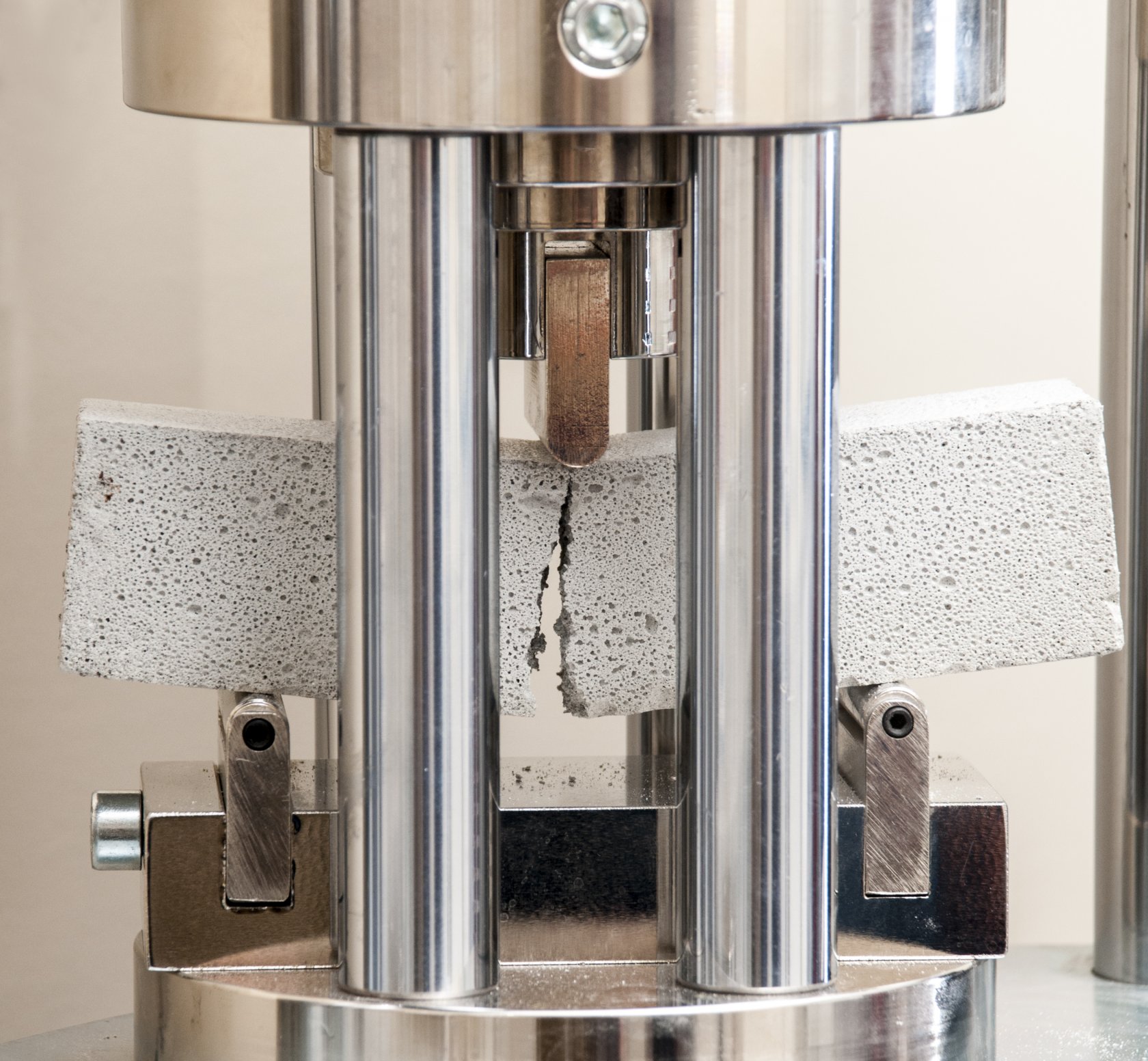geopolymer cement
They are called "geopolymers" because the raw materials used for their production are mainly minerals of geological origin.
| History French chemist Joseph Davidovits coined the term "geopolymer" in 1978. Russian engineers of Renca company suggested the term géobeton as a particular case for construction materials based on geopolymer binders. Examples of geopolymer cement used in construction can be found in Australia, Ireland, the United States, and Russia, to name a few. For instance, in 2014, an entire airport in Brisbane, Australia, was constructed with a concrete based on geopolymer binders. In the United States, special high strength geopolymer concretes have been used for airfield and road repairs. Metropolitan tubings and elements of load-bearing structures are also produced. In Soviet Union, the development of similar materials started in the 1950s. The research was conducted by the Kyiv Institution of Civil Engineering, guided by Glukhovskiy V.D. Various objects were built, including civil and industrial construction. Examples include a residential house in Lipetsk, part of the railroad concrete ties in Moscow, a motorway in Magnitogorsk, and surfacing of the tank training battlefield near Chelyabinsk, to name a few. |
| Technology The technology of geopolymer concrete is based on the idea of applying inorganic mineral substances, the production of which does not require the additional use of natural resources, and does not lead to CO2 emissions into the atmosphere (byproducts of metallurgical, electrometallurgical industries and power plants). Geopolymer concrete is chemically inert to a range of aggressive substances and remains sturdy in severe climates. In comparison to traditional concrete production technology based on portland cement, geopolymer concrete has been shown to possess superior results in strength, durability, freeze-thaw resistance, fire resistance, heat insulation, corrosion, and aggressive substance resistance including some types of acids. Besides, the use of geopolymer cement reduces CO2 emissions by up to 90% compared to portland cement production. Geopolymer cement can be formulated to re-use and recycle industrial byproducts. |
























which reduces CO2 emission into the atmosphere by 90%
| Environmental Impact and Sustainability With population growth and the corresponding increasing demand in concretes and cements, ecological aspects of building have become a major concern of our generation. The portland cement industry is the second largest producer of CO2 globally. Introduction of the geopolymer technology in the production of concrete and cement gives the following environmental benefits in comparison with traditional portland cement production:
Buildings constructed with geocement earn additional LEED points compared to conventional construction materials. |
| Green Building Green building brings together a vast array of practices, techniques, and skills to reduce and ultimately eliminate the impacts of buildings on the environment and human health. It often emphasizes taking advantage of renewable resources, e.g., using sunlight through passive solar, active solar, and using plants and trees through green roofs, rain gardens, and reduction of rainwater run-off. Many other techniques are used, such as using low-impact building materials or packed gravel or permeable concrete instead of conventional concrete or asphalt to enhance the replenishment of groundwater. A green building is one which uses less water, optimizes energy efficiency, conserves natural resources, generates less waste and provides healthier spaces for occupants, as compared to a conventional building. The green building concept is gaining significant importance in the world. By adopting Green methodologies, we would be able to reduce the carbon footprint and would be helping the environment. The construction industry is one of the major consumers of natural resources such as cement, sand, rocks, and clays. The ever increasing unit cost of the usual ingredients of concrete has forced the construction engineers to think of ways and means of reducing the unit cost of its production. At the same time, increased industrial activity in core sectors like energy, steel, and transportation has been responsible for the production of large amounts of by-products such as fly ash, blast furnace slag, silica fume, and quarry dust with a consequent disposal problem. |
| Application Geocement can be used in a wide range of applications in different industries. Examples of industries where geopolymer cement-based products can be applied:
|



| The Future - is Now! RENCA has elaborated and tested various compositions of geobeton based on geopolymer binder for the technology of 3D-printing on mobile construction printer of the company Apis Cor. This experience is unique. Both technologies are at the start of conquering the construction market, but the representatives of both companies believe that the future is in fast and eco-friendly construction. The tests have shown a high efficiency of geobeton. Due to its specific composition an ideal for 3D printing consistency of the mixture was reached. This shortens the time of construction: the houses can be built within hours. The elaborated formula of geobeton is the most suitable for the technology of 3D printing due to a higher thixotropy, fluidity and an ability to adjust the setting time, with a constantly high mechanical strength (compressive strength reaches 100 MPa and more). Moreover geobeton is cost-eficient eco-friendly material thanks to the use of industrial byproducts. Engineers of the company Renca Rus plan to modify compositions of the mixtures to adjust them both for the hot climate and severely cold temperatures, as well as to create the mixtures on the base of various local raw materials worldwide to optimise the cost and properties of geobeton and to enable its efficient implementation with the mobile construction 3D printer of Apis Cor. | |
Welcome to the forefront of geopolymer technology and construction education! Dive deep into the fascinating world of geopolymers with us. From the molecular intricacies to practical applications in the construction field, we've got you covered.
-> Enrich your knowledge with meticulously crafted online classes that elucidate the complexities of geopolymer science.
-> Join our interactive seminars and hands-on workshops, bringing together industry experts and enthusiasts.
-> Our seasoned speakers delve into the most pressing topics in geopolymer technology, providing unique insights and sparking rich discussions.
-> See geopolymer technology in action! We bring you captivating demonstrations that showcase the practical applications of construction.
Whether you're a student, professional, or just curious about geopolymer technology, this is your one-stop destination. Subscribe now and embark on this enlightening journey with us!
www.renca.org




